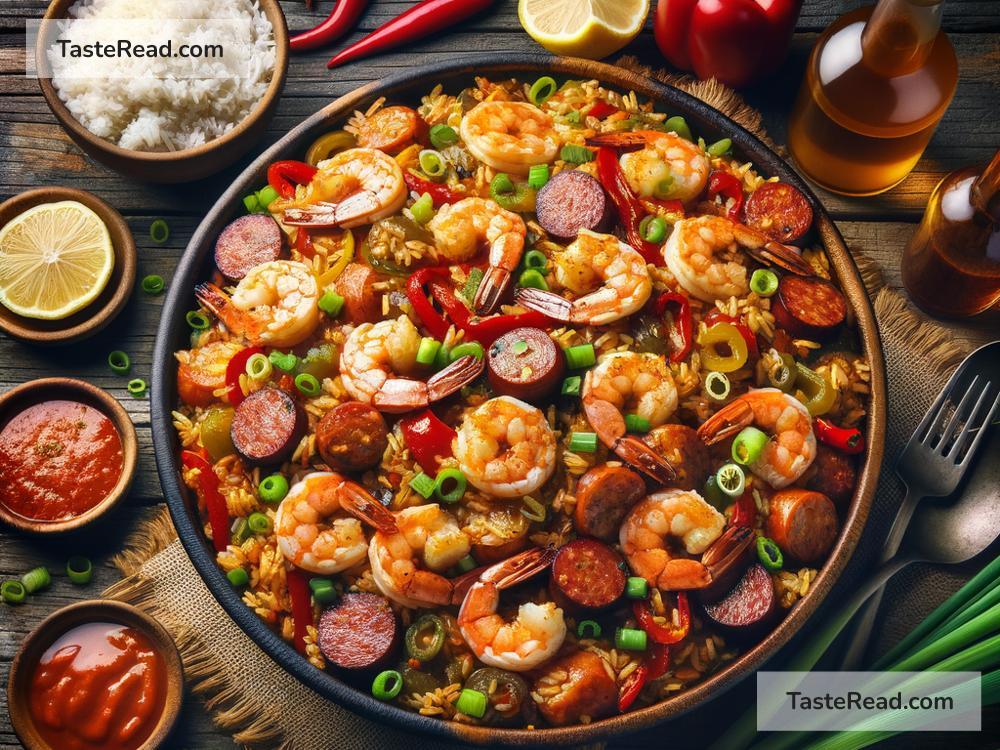If you’re seeking a culinary adventure that’ll transport you straight to the heart of Southern comfort food, look no further than jambalaya. This vibrant dish, bursting with flavors, texture, and history, is a staple of Louisiana cooking and has been warming hearts and bellies for generations. Whether you’re already a fan or new to this Southern delight, join us as we dive deeper into exploring the flavors of jambalaya for a truly unforgettable Southern-style dinner.
What is Jambalaya?
At its core, jambalaya is a one-pot wonder, a savory symphony of rice, meat, vegetables, and spices. Imagine taking a bite and tasting smoky sausage, tender chicken, succulent shrimp, paired harmoniously with the tangy kick of tomatoes, the aromatic presence of onions, bell peppers, and celery (the “Holy Trinity” of Cajun and Creole cooking), all brought together by a flavorful base of rice absorbing every nuance of the ingredients cooked with it. This dish doesn’t just feed the body; it tells a story of cultural fusion, of Spanish, French, African, and Native American influences mingling in the melting pot of the South.
Creole vs. Cajun Jambalaya
While jambalaya is universally adored, it’s important to highlight the two main styles: Creole and Cajun. Creole, or “red” jambalaya, includes tomatoes, giving it a vibrant, tangy flavor and a colorful appearance, a reflection of the cosmopolitan nature of New Orleans. On the other hand, Cajun jambalaya, born in the rural, swampy parts of Louisiana, skips the tomatoes and boasts a smokier, more earthy flavor profile, thanks to being usually cooked in a cast iron pot that enhances its rustic charm.
The Ingredients
The beauty of jambalaya lies in its versatility. While there are staple ingredients, the dish invites creativity, making it a perfect canvas for personal expression.
- Proteins: Andouille sausage, chicken, and shrimp are the traditional stars. Andouille sausage, with its smoky, spicy kick, is particularly indispensable for authentic flavor.
- The Holy Trinity: No jambalaya is complete without onions, celery, and bell peppers. This combination lays a flavor foundation that’s rich, aromatic, and unmistakably Southern.
- Rice: Long-grain rice is preferred, acting like tiny sponges absorbing every other flavor in the pot.
- Seasonings: Garlic, green onions, thyme, bay leaves, and a good Cajun or Creole seasoning blend bring the dish to life, infusing it with depth and warmth.
Cooking Jambalaya: Tips for a Perfect Pot
- Sear the meat: Begin by searing your chosen meats to lock in flavors and to add a layer of complexity to the dish.
- Sauté the Holy Trinity: Sautéing onions, peppers, and celery in the same pot after cooking the meat layers flavors even further.
- The right ratio of rice to liquid is crucial: Typically, a 1:2 ratio of rice to liquid (like chicken stock) works well, ensuring the rice cooks perfectly without becoming mushy.
- Simmer gently: Once everything’s in the pot, let it simmer gently. The magic happens slowly, allowing every ingredient to contribute its notes to the melody.
- Avoid stirring too much: Stirring too often can break down the rice and affect the texture. Just let it do its thing.
Serving and Enjoying
When it’s time to serve, a sprinkle of fresh green onions or a dash of hot sauce can add an extra zing. Jambalaya is practically a meal in itself, but feel free to pair it with simple sides like cornbread or a crisp green salad for a complete Southern feast.
One of the most beautiful aspects of jambalaya is its communal nature. It’s not just a dish; it’s an experience, best shared with friends and family, garnished with stories and laughter. Whether it’s a cozy winter dinner or a festive summer get-together, jambalaya fits seamlessly, bringing people together over a pot of something uniquely delicious and deeply comforting.
Conclusion
Exploring the flavors of jambalaya is like taking a gastronomic journey through the heart of the South. It’s a dish that respects its roots while inviting each cook to add their personal touch. Whether you lean towards the tomato-rich Creole version or prefer the smokier Cajun rendition, making jambalaya is an adventure in itself. So, gather your ingredients, roll up your sleeves, and get ready to enjoy a Southern-style dinner that promises to be as vibrant and hearty as the culture from which it comes. Happy cooking!


